1. The Royal, or first, colour of every regiment is to be the Great Union throughout, being the Imperial Colour of the United Kingdom of Great Britain and Ireland, in which the Cross of St. George is conjoined with the Crosses of St. Andrew and St. Patrick, on a blue field, and is to bear in the centre the Imperial Crown, and the number of the regiment underneath in gold Roman characters.
2. The regimental, or second, colour is to be of the colour of the facing of the regiment, with the Union in the upper canton, except those regiments which are faced with red, white, or black; in those regiments which are faced with red or, white, the second colour is to be the Red Cross of St. George in a White Field, and the Union in the upper canton. In those regiments which are faced with black, the second colour is to be St. George's Cross; the Union in the upper canton; the three other cantons black. The number of the regiment is to be embroidered in gold Roman characters in the centre.
3. Those regiments which bear a royal, county, or other title are to have such designation on a red ground round a circle within the Union-wreath of roses, thistles, and shamrocks. The number of the regiment in gold Roman characters in the centre.
4. In those regiments which bear any ancient badge, the badge is to be on a red ground in the centre, and the number of the regiment in gold Roman characters underneath. The Royal, or other title, to be inscribed on a circle within the Union-wreath of roses, thistles, and shamrocks.
5. The regimental, or second colour, is also to bear the devices, distinctions, and mottoes, which have been conferred by royal authority; the whole to be ensigned with the Imperial Crown. Second battalions carry the same colours as first battalions, with the addition of "II BATT." on a scroll below the Union-wreath.
6. The colours are to be of silk; the dimensions to be four feet flying, and three feet six inches deep on the pike, exclusive of the fringe: the length of the pike (spear and ferrel included) to be nine feet ten inches: the cords and tassels of the whole to be crimson and gold mixed.
7. No addition or alteration is to be made in the colours of any regiment of infantry without Her Majesty's special permission and authority, signified through the Commander-in-chief of the army."
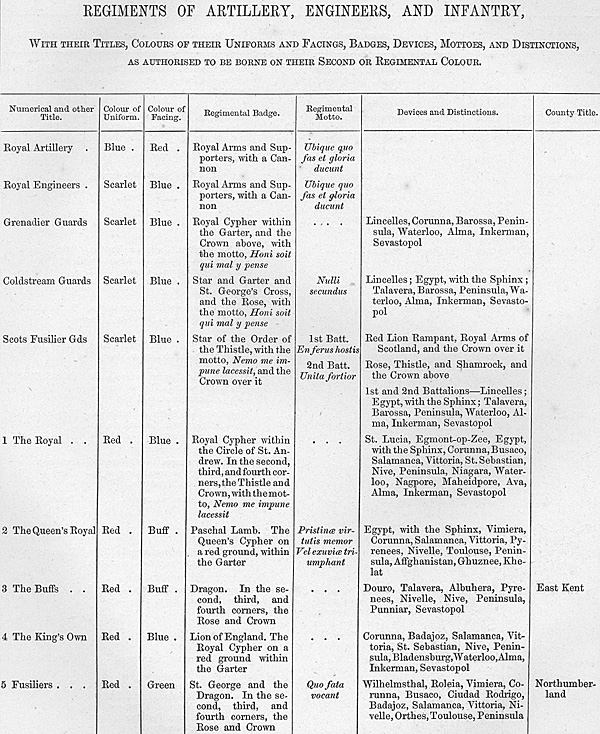
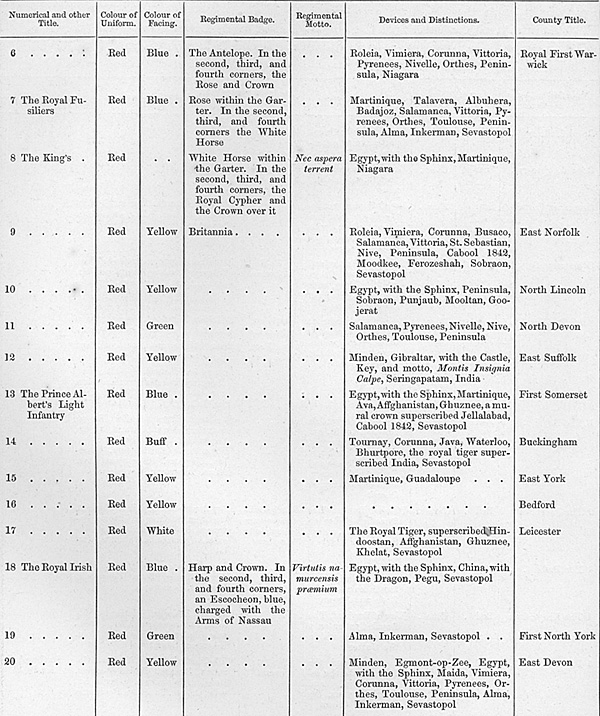

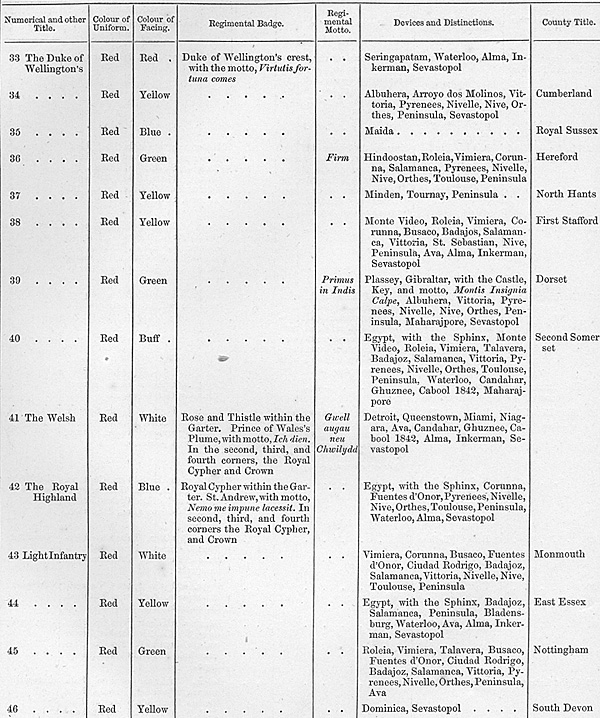
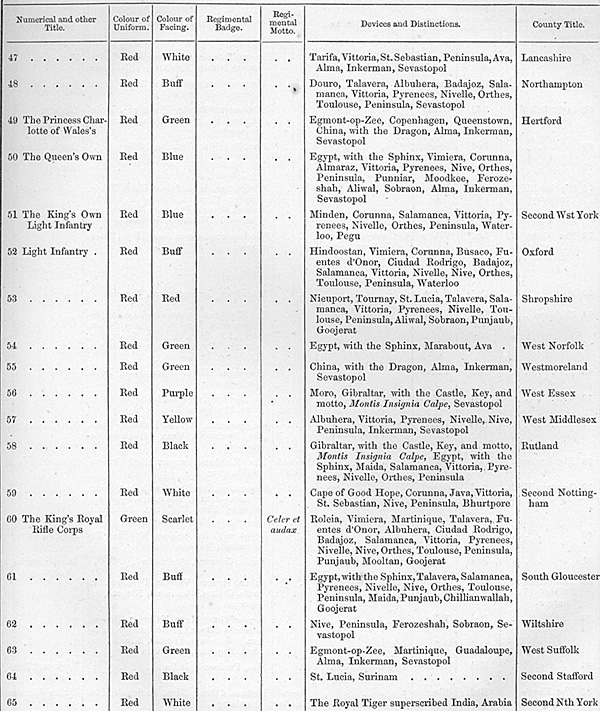
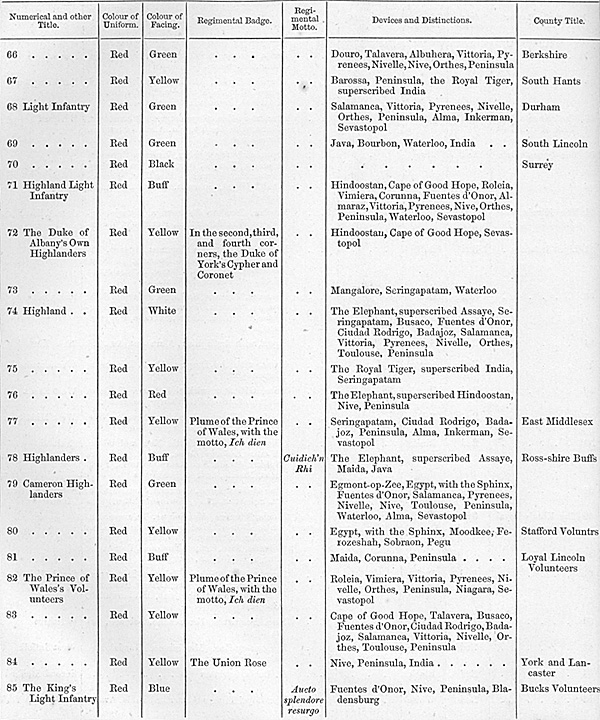
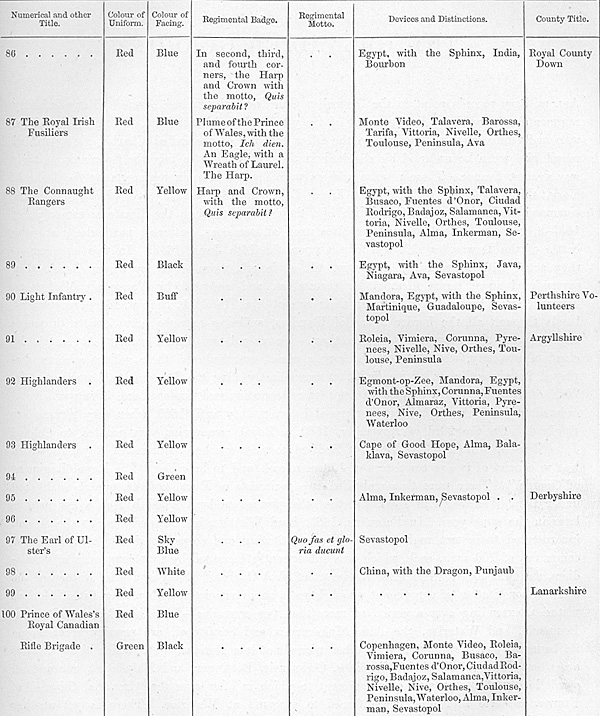
Back to Colors of the British Army: Grenadier Guards Table of Contents
Back to 19th Century: Victorian Era Book List
Back to ME-Books Master Library Desk
Back to MagWeb Master Magazine List
© Copyright 2005 by Coalition Web, Inc.
This article appears in ME-Books (MagWeb.com Military E-Books) on the Internet World Wide Web.
Articles from military history and related magazines are available at http://www.magweb.com